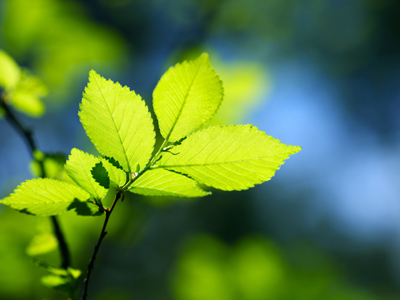
Ask the AI Tutor
Need help with Plant Organs 01? Ask our AI Tutor!
AI Tutor - Lucy
Connecting with Tutor...
Please wait while we establish connection

The energy for photosynthesis to take place in these leaves comes from sunlight.
Plant Organs 01
Plants have organs too. In KS3 Science, pupils learn how roots, stems, and leaves each play a role in keeping plants alive, growing, and reproducing successfully.
1 .
Which two substances are used in photosynthesis?
Carbon dioxide and oxygen
Carbon dioxide and water
Oxygen and glucose
Oxygen and water
Carbon dioxide enters through stomata (small holes) on the underside of a leaf
2 .
Plants make their own food. This is stored as what?
Fat
Glucose
Protein
Starch
You can test for starch in a leaf by using iodine
3 .
Which organ is used to absorb water?
Leaf
Root hair
Root tip
Stem
96% of a cucumber is water
4 .
Which organ is used in pollination?
Flower
Leaf
Root
Stem
Flowers often contain nectar and some give off a scent in order to attract insects
5 .
Photosynthesis does not occur in roots because .......
Root hair cells absorb water
Root hair cells do not have chloroplasts
Roots anchor plants in soil
Roots are used to transport water
They are usually underground organs so little or no light reaches them anyway
6 .
Which organ is used in photosynthesis?
Flower
Leaf
Root hair
Root tip
Photosynthesis means making (synthesis) through light (photo)
7 .
Which two substances are produced in photosynthesis?
Carbon dioxide and water
Glucose and carbon dioxide
Oxygen and carbon dioxide
Oxygen and glucose
Oxygen leaves through the stomata
8 .
What colour is chlorophyll?
Brown
Green
Red
White
It is why most plants look green
9 .
Nitrates provide nitrogen. This is important for what?
Good roots
Green leaves
Purple flowers
Yellow flowers
Nitrates are also used to make proteins for growth
10 .
Energy for photosynthesis comes from .......
Glucose
Oxygen
Sunlight
Water
When plants don't get enough light, they can't make enough food and they become weakened and can die
**Unlimited Quizzes Await You! 🚀**
Hey there, quiz champ! 🌟 You've already tackled today's free questions.
Ready for more?
Ready for more?
🔓 Unlock UNLIMITED Quizzes and challenge yourself every day. But that's
not all...
not all...
🔥 As a Subscriber you can join our thrilling "Daily Streak" against other
quizzers. Try to win a coveted spot on our Hall of Fame Page.
quizzers. Try to win a coveted spot on our Hall of Fame Page.
Don't miss out! Join us now and keep the fun rolling. 🎉
**Unlimited Quizzes Await You! 🚀**
Hey there, quiz champ! 🌟 You've already tackled today's free questions. Ready for more?
🔓 Unlock UNLIMITED Quizzes and challenge yourself every day. But that's not all...
🔥 As a Subscriber you can join our thrilling "Daily Streak" against other quizzers. Try to win a coveted spot on our Hall of Fame Page.
Don't miss out! Join us now and keep the fun rolling. 🎉






